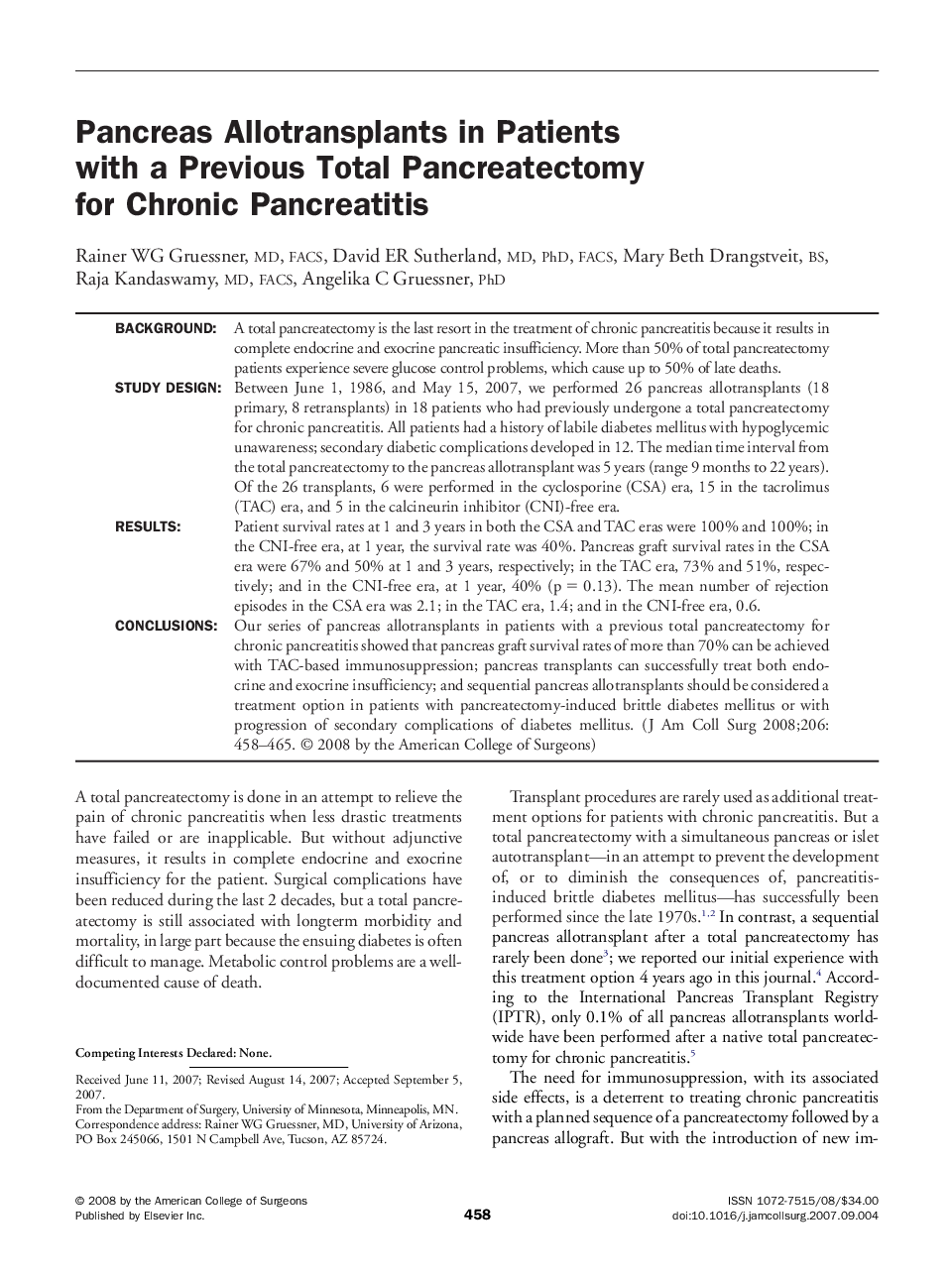| کد مقاله | کد نشریه | سال انتشار | مقاله انگلیسی | نسخه تمام متن |
|---|---|---|---|---|
| 4295036 | 1612314 | 2008 | 8 صفحه PDF | دانلود رایگان |

BackgroundA total pancreatectomy is the last resort in the treatment of chronic pancreatitis because it results in complete endocrine and exocrine pancreatic insufficiency. More than 50% of total pancreatectomy patients experience severe glucose control problems, which cause up to 50% of late deaths.Study DesignBetween June 1, 1986, and May 15, 2007, we performed 26 pancreas allotransplants (18 primary, 8 retransplants) in 18 patients who had previously undergone a total pancreatectomy for chronic pancreatitis. All patients had a history of labile diabetes mellitus with hypoglycemic unawareness; secondary diabetic complications developed in 12. The median time interval from the total pancreatectomy to the pancreas allotransplant was 5 years (range 9 months to 22 years). Of the 26 transplants, 6 were performed in the cyclosporine (CSA) era, 15 in the tacrolimus (TAC) era, and 5 in the calcineurin inhibitor (CNI)-free era.ResultsPatient survival rates at 1 and 3 years in both the CSA and TAC eras were 100% and 100%; in the CNI-free era, at 1 year, the survival rate was 40%. Pancreas graft survival rates in the CSA era were 67% and 50% at 1 and 3 years, respectively; in the TAC era, 73% and 51%, respectively; and in the CNI-free era, at 1 year, 40% (p = 0.13). The mean number of rejection episodes in the CSA era was 2.1; in the TAC era, 1.4; and in the CNI-free era, 0.6.ConclusionsOur series of pancreas allotransplants in patients with a previous total pancreatectomy for chronic pancreatitis showed that pancreas graft survival rates of more than 70% can be achieved with TAC-based immunosuppression; pancreas transplants can successfully treat both endocrine and exocrine insufficiency; and sequential pancreas allotransplants should be considered a treatment option in patients with pancreatectomy-induced brittle diabetes mellitus or with progression of secondary complications of diabetes mellitus.
Journal: Journal of the American College of Surgeons - Volume 206, Issue 3, March 2008, Pages 458–465